Medicine Hat: A Healing City/Una città che guarisce
Today, the Alberta town draws on its symbolic name and community spirit to chart a new future/Oggi, la cittadina dell’Alberta attinge al suo nome simbolico e allo spirito di comunità per tracciare un nuovo futuro (il testo italiano segue quello inglese)
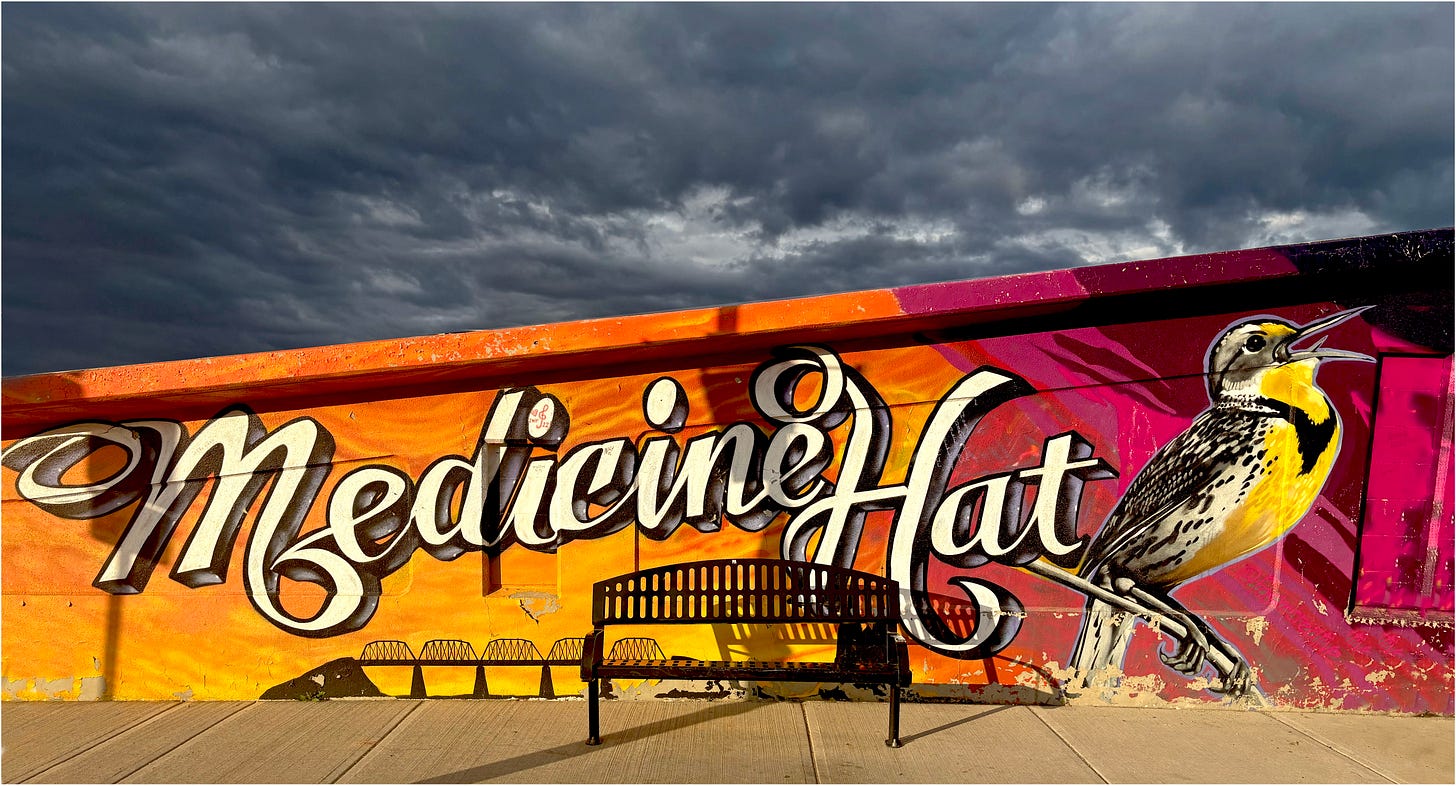
“This part of the country seems to have all hell for a basement, and the only trap door appears to be in Medicine Hat.” The 1907 quip by Rudyard Kipling—now immortalized on a downtown mural—captures with irony and uncanny accuracy the arc of this Alberta city’s fortunes. The vast natural gas reserves to which the British writer alluded have been, over time, not just metaphorically but materially, both a blessing and a curse for Medicine Hat: a blessing during the boom years, when abundant energy brought prosperity to its residents (earning the nickname “Gas City”); a curse, when gas prices collapsed in 2014 and dragged the city down with them, plunging it into a deep crisis.
The reasons behind the fall? A surge in global supply—particularly from the United States, thanks to fracking—combined with growing competition from renewable sources like wind and solar, stagnant demand, and slow economic diversification. Many local industries, once thriving on cheap energy, were forced to close, scale down, or move out. Even Medalta Potteries—a historic icon of the city’s industrial heyday, once responsible for 75% of Canada’s ceramic production—has long ceased operations. Yet it lives on in a new form—revitalized as a museum, an art gallery, and the vibrant hub of an inspiring international Artists in Residence program (see Luke Fandrich’s evocative documentary: Clay, Creativity and the Comeback).
Wandering through the city centre in the lingering glow of a prairie sunset, one can sense the dual path this community has travelled: one of rapid prosperity, with new buildings for banks, law firms, and engineering consultancies; and one of decline, with boarded-up storefronts, peeling paint, and once-vibrant parks now frequented at night by the marginalized and the addicted.

Yet the city refuses to give in. Murals appear on every corner—often commissioned to “spark hope”—testifying to a collective desire for rebirth. Today, Medicine Hat is reimagining itself through tourism, culture, renewable energy, and small-scale entrepreneurship. And while the golden age of “Gas City” may be behind it, the name itself continues to inspire. “Medicine Hat” is the English translation of the Cree word saamis, meaning “the healer’s hat.” According to Indigenous legend, a young shaman once received a magical otter-skin hat from a river spirit in this very spot, to help save his people from famine. From that moment, the city took on a name that is symbolic, spiritual—and perhaps even restorative.

Fittingly, the Kipling quote mentioned above goes on to say: “And you don’t even think of changing the name of your town. It’s the only hat of its kind on Earth, and it’s all your own.”
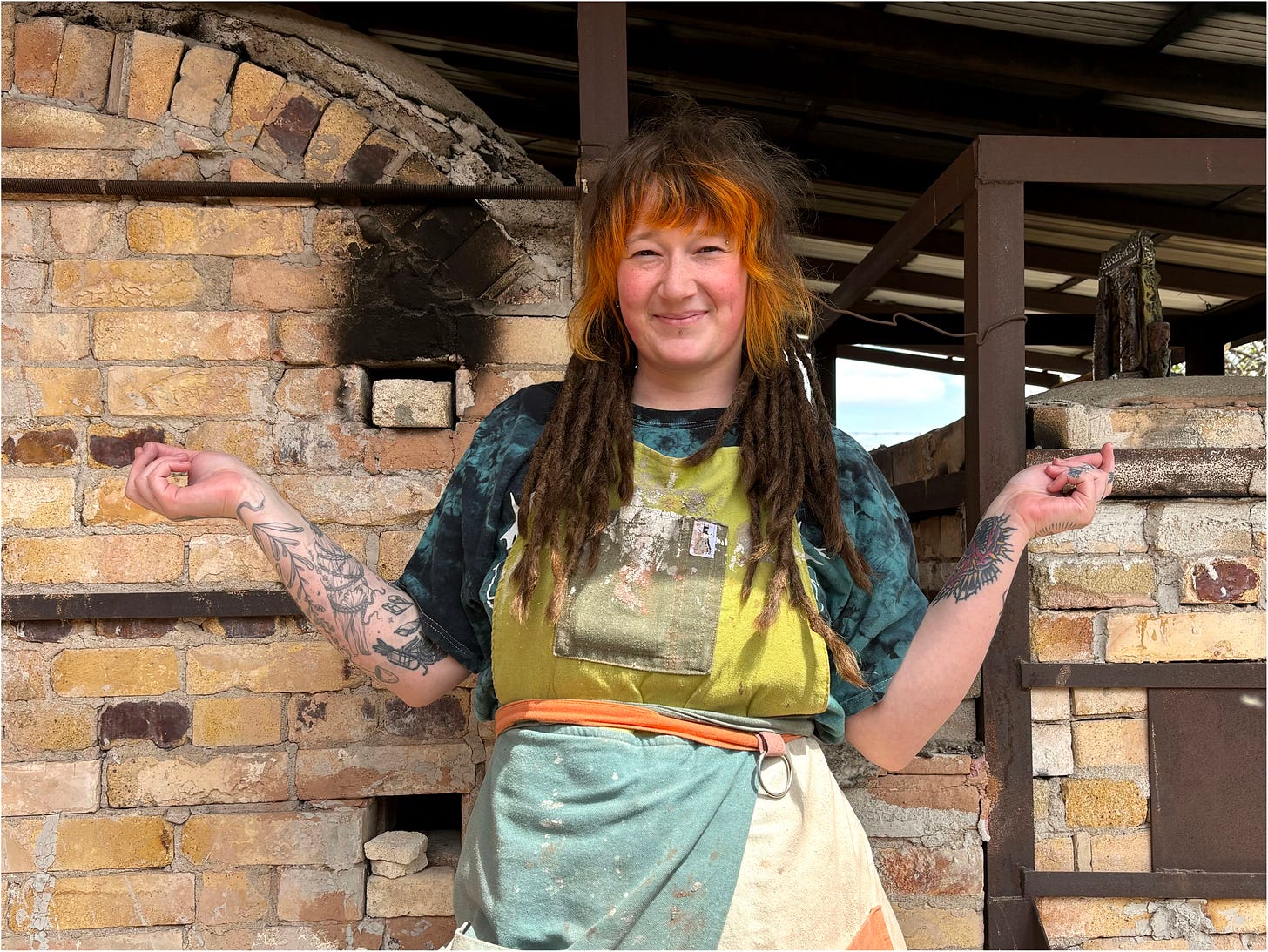
The young people here believe in it:
Jennifer, 22: “I’m studying to become a teacher. I want to raise my children here, in a community where people truly support each other.”
Reyna, 20: “I love working with clay. At Medalta, I’m making my dream come true.”
Alex, 20: “I’m a student at Emily Carr University in Vancouver. I really enjoyed my time here and learned a lot. The town has a lot to offer—great hiking trails I didn’t know about and beautiful weather, with lots of sunshine.”
Jane, 37: “Medicine Hat has a small-town feel but all the amenities of a bigger city. I’m a mom, and here I can focus on my kids—it’s easy to make friends, and the community feels close-knit.”
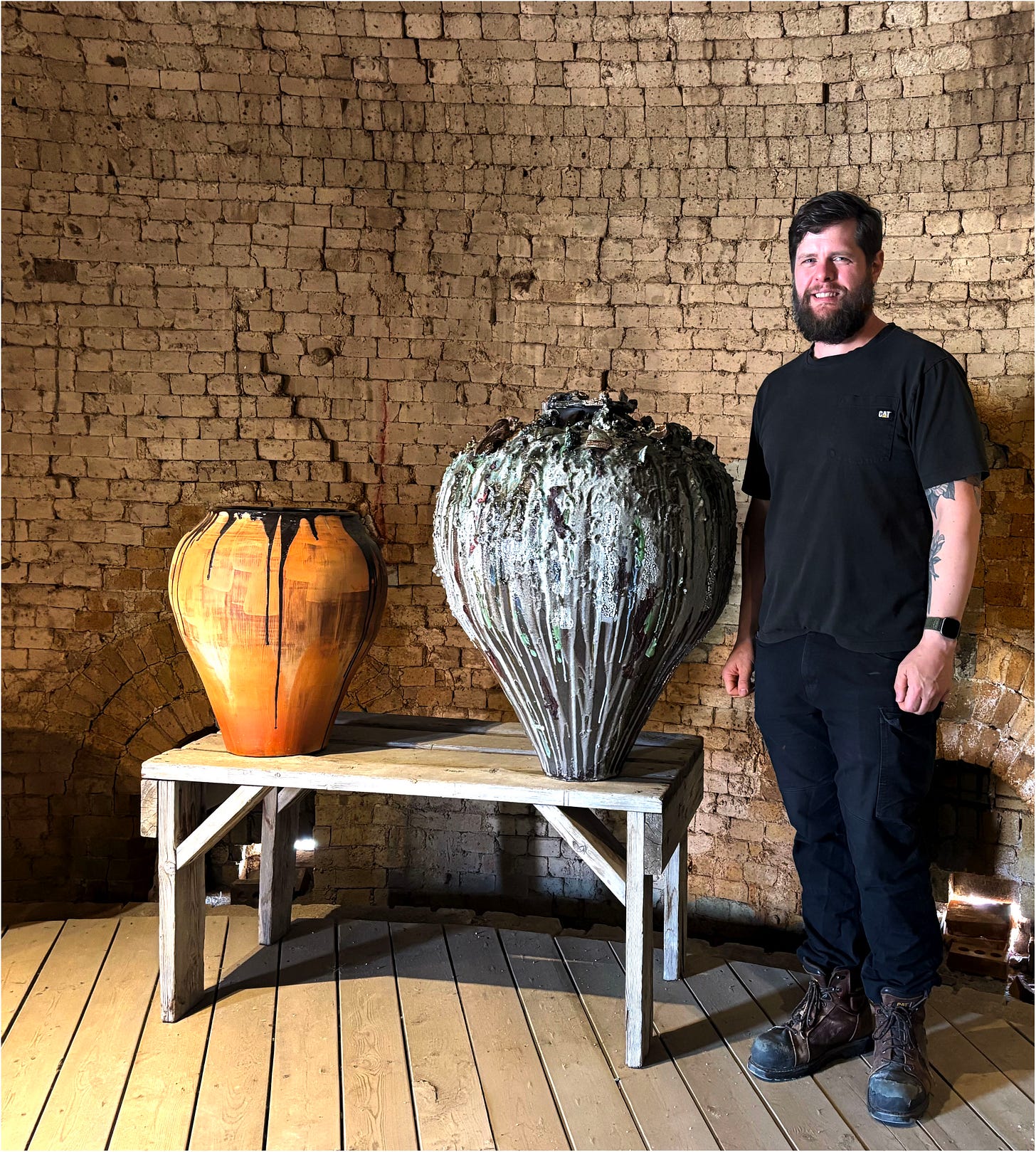
Keep following us along the road eastward and spread the word about our reporting tour across Canada!
Sotto il cappello del guaritore
“Questa parte del paese sembra avere l’inferno intero come seminterrato, e l’unica botola d’accesso pare trovarsi a Medicine Hat.” La battuta di Rudyard Kipling del 1907, oggi riportata su un murale del centro cittadino, racconta con ironia ma anche con straordinaria precisione la parabola di questa città dell’Alberta. I giacimenti di gas naturale cui fa riferimento lo scrittore britannico sono stati, nel tempo, e non solo simbolicamente, sia il paradiso che l’inferno per Medicine Hat: un paradiso, quando l’abbondanza energetica ha garantito benessere diffuso ai suoi abitanti (la città era soprannominata “Gas City”); un inferno, quando nel 2014 il prezzo del gas è crollato, trascinando con sé la città, finita in una crisi profonda.

Le cause del collasso? L’aumento dell’offerta globale (in particolare dagli Stati Uniti, con lo sviluppo del fracking), la concorrenza di fonti alternative come l’eolico e il solare, una domanda stagnante e la lentezza nel diversificare l’economia. Molte industrie locali—che prosperavano grazie a un’energia a basso costo—hanno chiuso i battenti o fortemente ridotto le attività. Perfino le Medalta Potteries—storico emblema dell’età dell’oro industriale della città, un tempo responsabili del 75% della produzione ceramica canadese—ha da tempo interrotto la produzione. Eppure, oggi rivive sotto una nuova forma: con un museo, una galleria d’arte e un suggestivo programma internazionale di residenza per artisti (si veda il coinvolgente documentario di Luke Fandrich, Clay, Creativity and the Comeback).

Aggirandoci per le vie del centro, nelle luci di un tramonto prolungato come avviene a queste latitudini, si percepisce chiaramente il doppio binario su cui ha viaggiato Medicine Hat: quello di una prosperità accelerata, con nuovi edifici per banche, studi legali e società di consulenza; e quello del suo crollo, con intere zone abbandonate, muri scrostati e parchi pubblici che la sera si popolano di emarginati e tossicodipendenti.
Eppure, la città non si arrende. Murales disseminati ovunque, spesso commissionati per “dare speranza”, raccontano un desiderio di rinascita. Oggi Medicine Hat cerca un nuovo volto: attraverso turismo, cultura, energie rinnovabili e piccola imprenditoria. E se il periodo d’oro della “Gas City” è alle spalle, resta, però, un nome che continua a ispirare. “Medicine Hat” è la traduzione inglese del termine Cree saamis, che significa “il cappello del guaritore”. Una leggenda indigena racconta che in questo luogo un giovane sciamano ricevette da uno spirito del fiume un cappello magico di pelle di lontra, per salvare il suo popolo dalla carestia. È da lì che deriva il nome della città—simbolico, spirituale, e forse anche terapeutico.
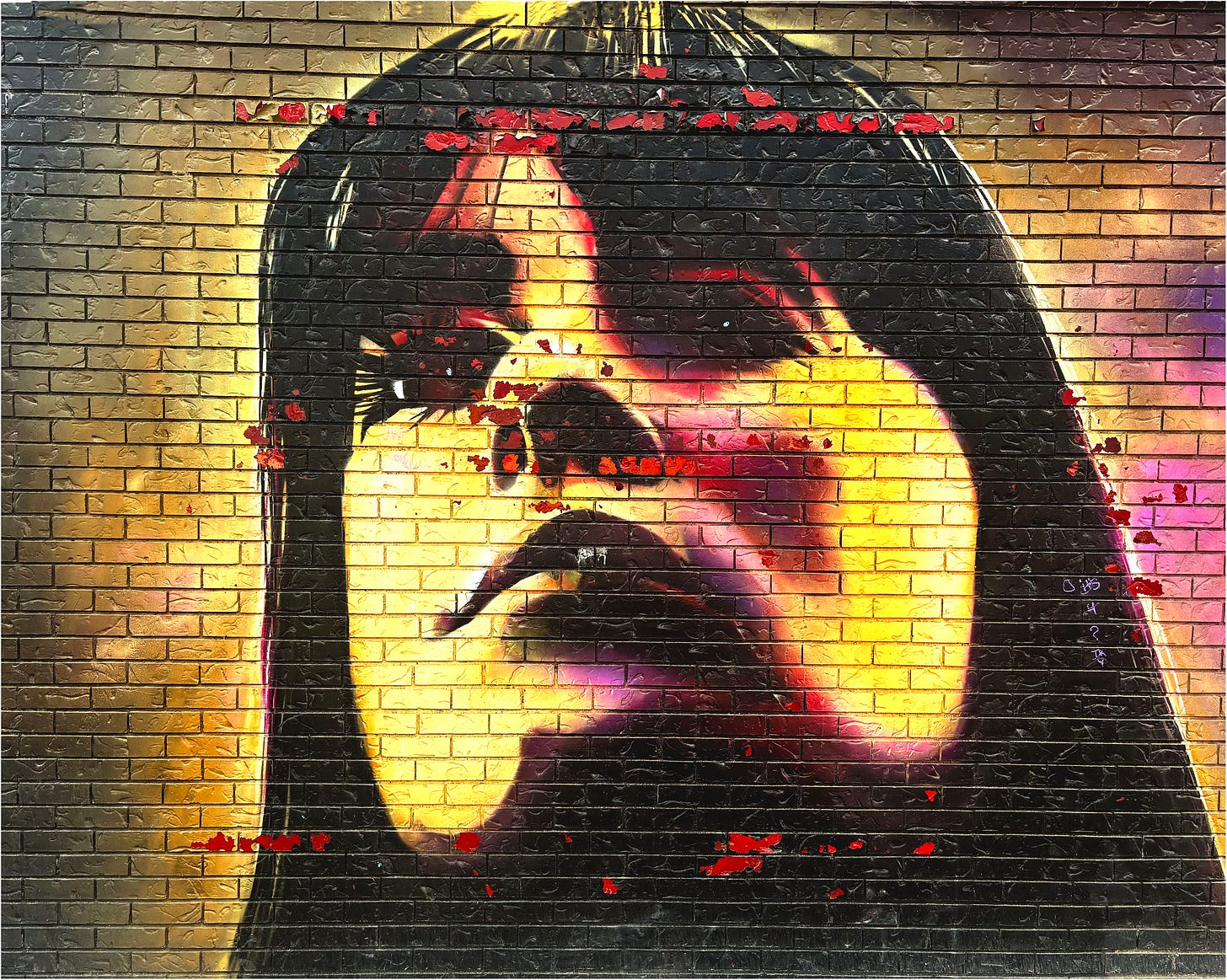
La citazione di Kipling prima ricordata, non a caso, prosegue così: “E che non ti venga in mente di cambiare il nome alla tua città. È l’unico cappello nel suo genere sulla faccia della Terra ed è tutto tuo.”
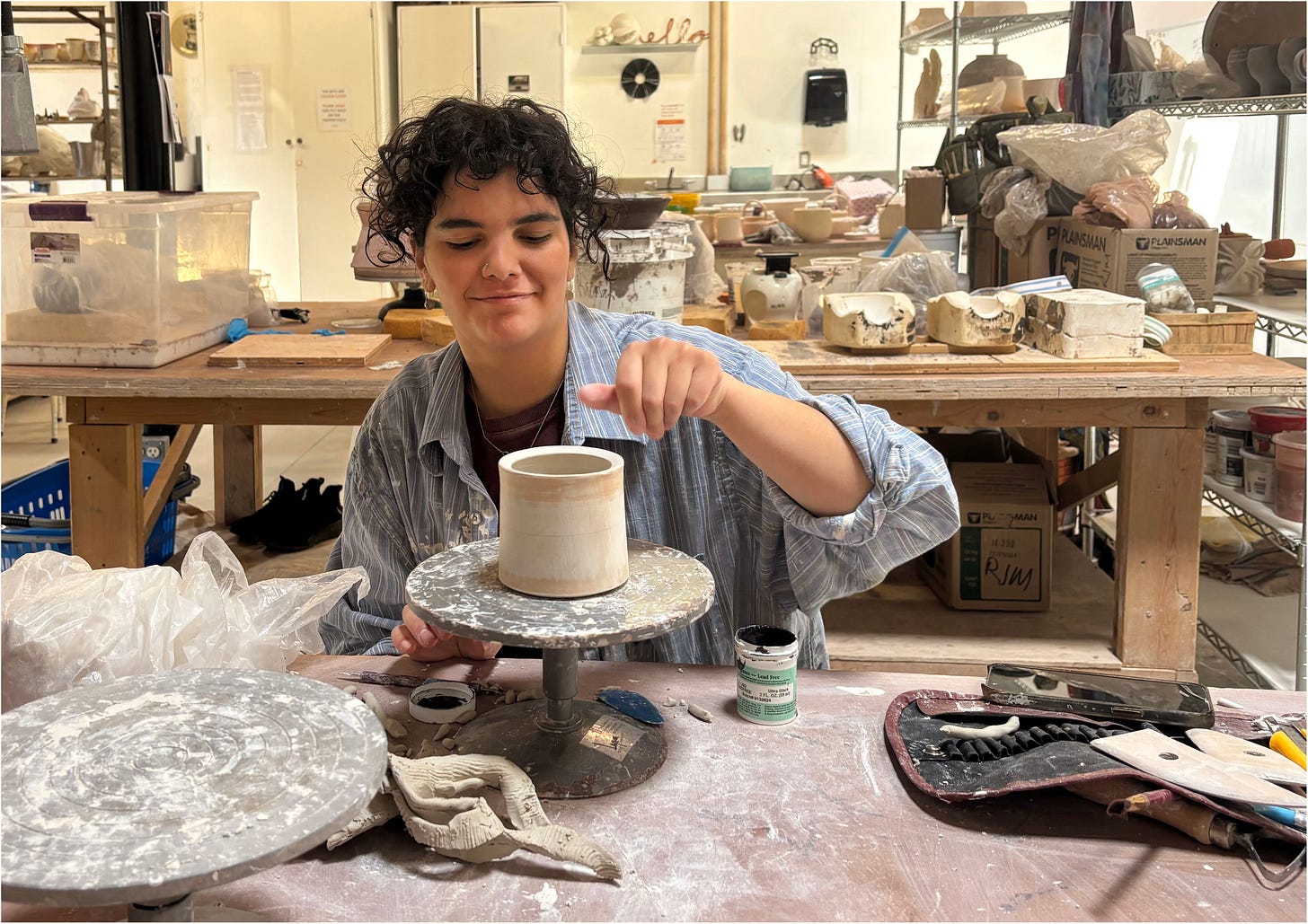
I giovani di qui ci credono:
Jennifer, 22 anni: “Sto studiando per diventare insegnante. Voglio crescere i miei figli qui, in una comunità dove ci si aiuta davvero.”
Reyna, 20 anni: “Adoro lavorare con l’argilla. Qui alla scuola della Medalta sto realizzando il mio sogno.”
Alex, 20 anni. “Studio alla Emily Carr University di Vancouver. Sto apprezzano molto il periodo trascorso qui, è davvero formativo. La città offre molto più di quanto immaginassi—splendidi sentieri per escursioni e un clima splendido, con tanto sole.”
Jane, 37 anni: “Medicine Hat ha l’atmosfera di una piccola cittadina, ma offre comunque tutti i comfort di una grande città. Sono una mamma: qui posso dedicarmi ai miei figli e fare amicizia con facilità.”
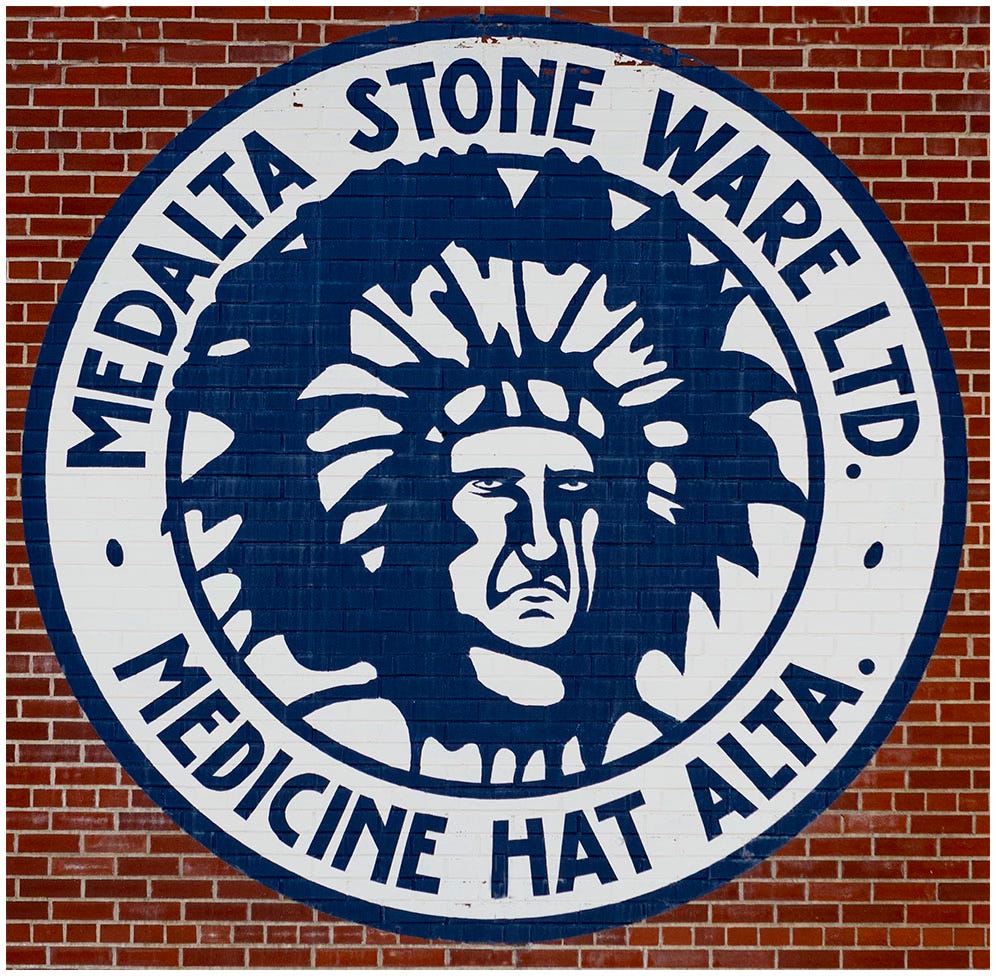
Continua a seguirci lungo la strada verso est e aiutaci a spargere la voce sul nostro viaggio-reportage attraverso il Canada!






